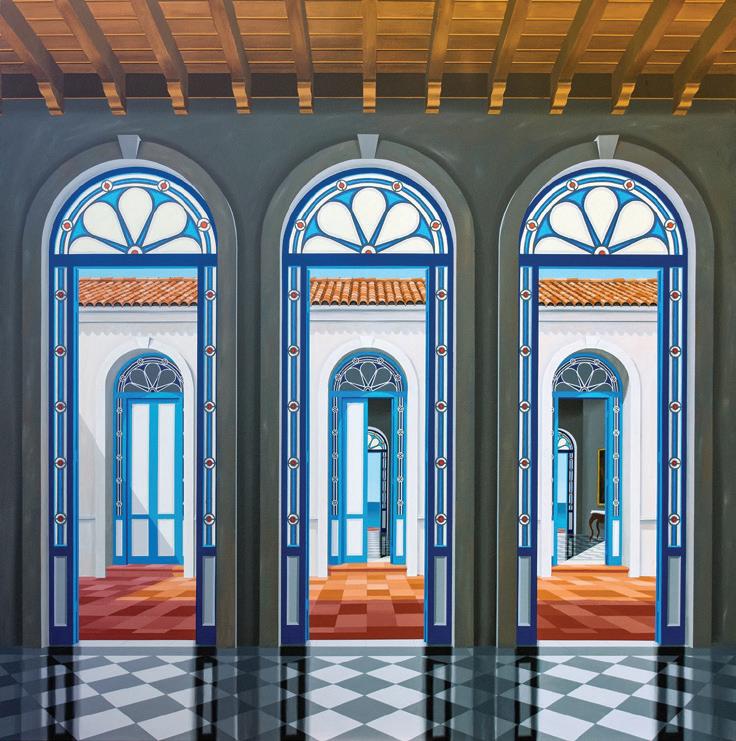
1 minute read
Cuban Research Institute
Cuban identity unveiled through art
René Portocarrero, Interior el Cerro con figura danzante (Cerro Interior with Dancing Figure), 1944
In 2017, the Cuban Research Institute hosted a conference that brought together a distinguished group of art critics, scholars and collectors to share their research on Cuban culture and how it has been defined by or reflected through art.
Several scholars engaged with works from the Darlene M. and Jorge M. Pérez Art Collection at FIU – a gift made to the Steven J. Green School of International & Public Affairs and the Patricia and Phillip Frost Art Museum by the Pérez couple. To capture these conversations and ideas, Jorge Duany, director of CRI, worked with the scholars to produce a book that would be readily available to everyone interested in Cuban art.

Manuel Mesa, Procesión en La Habana (Procession in Havana), 1930. Darlene M. and Jorge M. Pérez Art Collection at FIU, Patricia and Phillip Frost Art Museum, Miami


Humberto Calzada, Tradición (Tradition), 2017. Courtesy of the artist. “Picturing Cuba: Art, Culture and Identity on the Island and in the Diaspora” features 14 chapters written by leading and emerging scholars delving into different historical eras and various forms of art, including prints, paintings, photography, architecture and fashion. The book also includes re-prints of historical and contemporary Cuban art. “The basic idea of the book was to trace how Cuban national identity, cubanía, has been represented throughout history from the 18th century through the present,” Duany says. “We wanted to explore the distinctive lenses, themes and styles used and how those representations of identity have changed or remained very strong over time.” Published by the University of Florida Press, the volume boasts a robust list of contributors, including Carol Damian, the former director of the Frost Art Museum; art collector Emilio Cueto; Ramón Cernuda, gallerist of Cernuda Arte in Coral Gables; Andrea O’Reilly Herrera, professor of literature at the University of Colorado at Colorado Springs and many more. Aside from editing the volume, Duany also wrote its introduction and one of its chapters.










